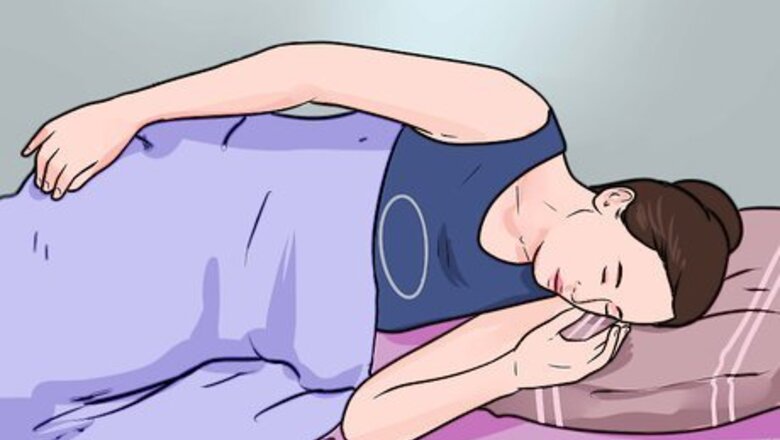
views
X
Trustworthy Source
Johns Hopkins Medicine
Official resource database of the world-leading Johns Hopkins Hospital
Go to source
Getting Comfortable at Night
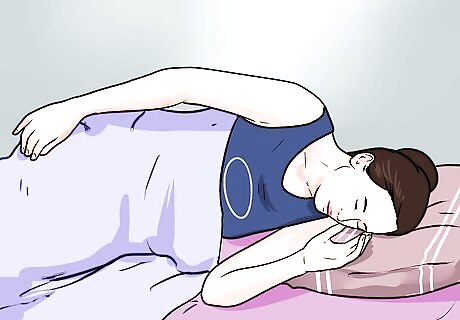
Sleep on your side. Sleeping on your side allows for good blood flow for both you and the baby, and helps to prevent unwanted problems from developing. Your left side is the preferred side, but either side is fine. Bend your knees and place a pillow between your legs. As your pregnancy advances, you may find additional relief from placing a pillow behind your back. Try using extra pillows to prop your head up if you are having trouble with indigestion or heartburn during the night. Try placing a small pillow beneath your abdomen, in addition to the one between your knees, if you are having trouble with back pain.
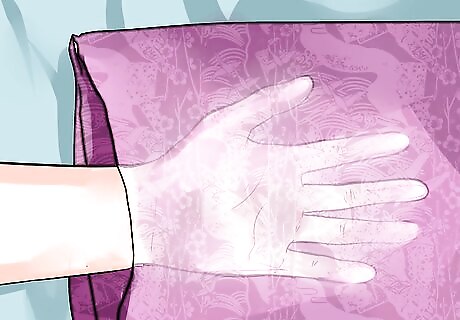
Relax your hands. Place your hands in a neutral position as you get comfortable to fall asleep. Relax your hands and be sure your wrists are not bent at all. If possible, rest your hand and wrist on a pillow slightly higher than your chest. Be sure this is a comfortable position for you. By raising your wrist, you are helping to reduce the amount of fluid and swelling that is pressing on the nerve. Some women find it helpful to place their hand on a small pillow, sliding it between the pillowcase and pillow. This helps them to maintain a neutral hand position throughout the night.
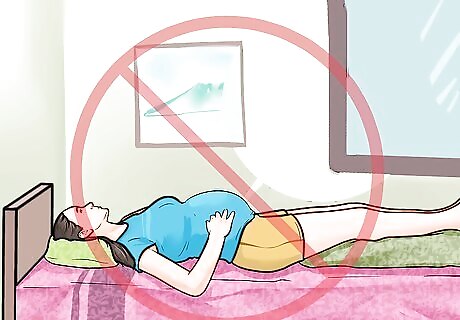
Avoid sleeping on your back or stomach. As your pregnancy progresses, you will have extra weight and body changes that may cause unwanted symptoms to develop depending on your sleep positions. Plus, you may develop new problems that can be prevented by sleeping on your side. Possible complications caused by sleeping on your back include back pain, hemorrhoids, problems breathing, heartburn and indigestion, blood pressure changes, and a decrease in circulation to your own heart and to the baby. Sleeping on your stomach causes prolonged pressure against your abdomen. This position can put pressure on major blood vessels and arteries interfering with the blood supply, plus this position will not be very comfortable as your pregnancy progresses.
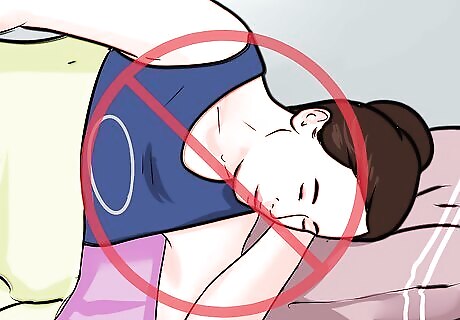
Avoid sleeping on your hands. Do not place your hands under your cheek or neck area, or under any part of your body. This action adds pressure to your wrist area that is already compressed. It also increases the chances of your wrist becoming bent while you are sleeping. Avoid any sleeping positions that place pressure on your wrist or cause your wrist to bend in any direction. As you change positions during the night, be sure you do not end up sleeping on one of your hands. Clearly you cannot lay on your side and elevate both wrists on pillows, all at the same time. If you are having symptoms in both wrists, then consider placing a small but thick pillow on each side of you. As you turn to your other side, the extra pillow is within reach to rest your other wrist and hand in a neutral position. Find a comfortable, but neutral position for the lower hand. It may be possible to slide the lower hand and wrist under the small pillow without adding any pressure and without bending your wrist.
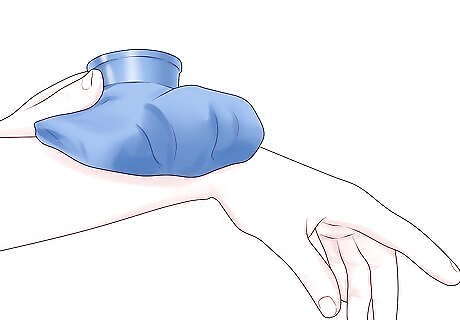
Ice your wrists before bed. The cold from an ice pack, frozen gel pack, or even a bag of frozen vegetables can help reduce inflammation and reduce pain. Wrap the ice pack in a thin towel and apply it to your wrist for 10 to 15 minutes. The relief will be temporary, but it may give you enough relief so that you can fall asleep. Never apply ice or a frozen item directly to your skin — always wrap it in something, such as a towel or a t-shirt. Otherwise you risk frostbite.
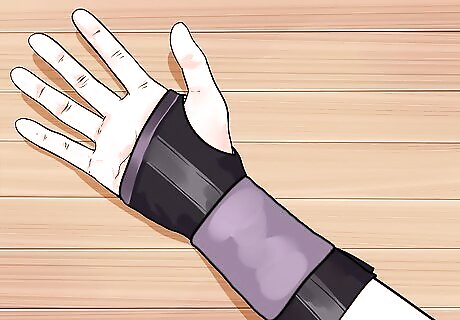
Wear a wrist brace. Use a brace or splint when you sleep. This is a good way to prevent bending the palm area down toward the wrist as you sleep. Bending the wrist in either direction restricts blood flow and adds pressure to the nerve that is already pinched or compressed. Many women find they get the most symptom relief from wearing a wrist brace while sleeping. Braces and splints can help to keep your wrists and hands in a neutral position so that you can avoid feeling pain during the night and avoid placing added pressure on the nerve. You can buy splints and braces at your local drugstore. You can also wrap your wrist. Click here to learn how to wrap a wrist that is plagued by carpal tunnel. Take care that any device or wrap you use is not too tight.
Reducing the Discomfort
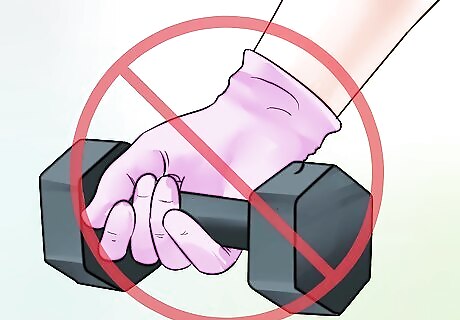
Relax your grip. While exercise is an important part of maintaining your health during your pregnancy, some exercises may worsen your symptoms of carpal tunnel. Exercises that involve tight gripping include holding tightly to the handles of a treadmill, stair climber, or elliptical machine. Consider replacing those exercises with a recumbent bicycle or other activity that does not require tight gripping. Adjust your muscle training workout to include exercises and the use of strength training equipment, such as manipulating weights, that do not put any pressure on your wrists. Either avoid certain exercises or loosen your grip. Be sure you can perform the exercises safely if you choose to continue but without gripping tightly.
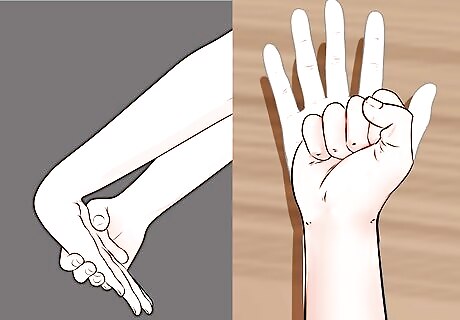
Perform hand exercises. Focus on exercising the tendons and ligaments in your hand, wrist, and arm, to add strength, reduce swelling in the area, and work towards improving your range of motion. Extend and stretch your wrist. Hold one arm out in front with your wrist bent, fingers pointing upward, and palm facing out. Use the fingers of your other hand to push back on your raised fingers, towards your chest, until you feel tension but not pain. Hold this position for about 20 seconds, then repeat twice on each hand. Do this three times daily.
Rotate your wrists. You should be able to bend your wrist to 90° either way without your fingers moving into a bent or curled position. If you can't do that, you'll need to start doing exercises to improve the flexibility in your wrists. Flex your wrist. Hold one hand in front with palm facing your chest. Use the fingers of the other hand to push along the finger area of the raised hand. Push towards your chest allowing your wrist to bend. Stop when you feel tension, but not pain, and hold the position. Hold the position for about 20 seconds and repeat the stretch twice with each hand. Do this three times daily.
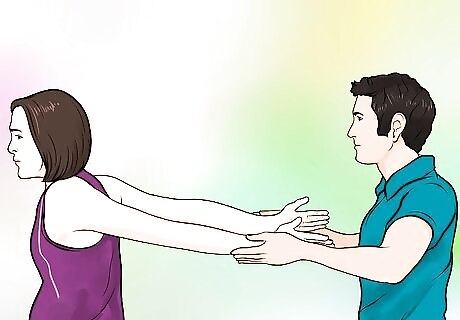
Pamper your hands. Consider hand massages in addition to the stretching exercises. Work with a physical therapist to learn the best techniques for massage that will relieve the pressure on the nerve. In addition to hand massages, consider getting routine upper back and neck massages. This may help relieve tension in the area and help with your upper body posture. Neck cramps and rolled shoulders may be contributing to the stress and pressure from your upper body muscles, down your arms, and to your wrists and hands. Participate in prenatal yoga or stretching exercise programs designed to strengthen and balance joints in the arms, wrists, hands, and upper body joints like your shoulders. Keep your hands warm to improve blood flow and reduce pain in the wrist area.
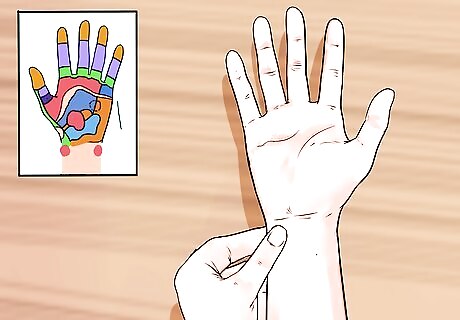
Use acupressure techniques. Applying pressure at specific points may help to relieve some of the discomfort. If you are unable to apply enough pressure yourself, such as in cases where both hands are affected by carpal tunnel, then ask someone to help. Apply pressure at a point referred to as pericardium point 6. To locate this area, relax your arm and hand, and rest your wrist area with the palm facing upward. Measure three finger widths from the point where your wrist naturally bends, measuring up your arm towards your elbow or shoulder. The point is located in a small dip in the skin, central to the flattened arm, and within the tendons, bones, and ligaments in the area. This might be an area where the clasp or buckle of a watch might normally rest. Apply firm pressure to that spot. It may feel as if it is bruised. Hold the pressure for ten seconds then repeat three times. Do the same thing to your other wrist. Repeat this procedure several times each day.
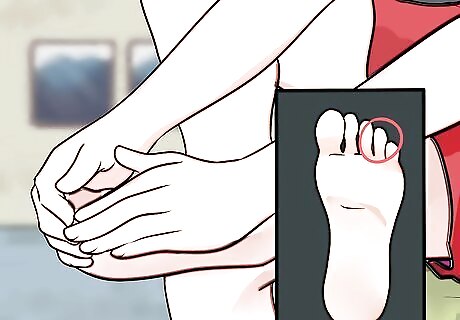
Try reflexology. While the scientific research in the field of reflexology is limited, small studies find some forms of reflexology to be possibly helpful. Relief of pain is one area that was determined to be possibly effective. This technique may be helpful during the night when you experience carpal tunnel pain. To relieve the pain and discomfort from carpal tunnel symptoms, the reflex target point is on your foot. Use the foot that is on the same side of the body associated with the pain. Locate the point by finding the base of your fourth toe. Imagine a straight line coming back towards your ankle from the toe. You may need to ask someone to help you. The most tender spot is located about 2 cm, or 0.8 inches, from the base of the fourth toe along the straight line and back towards your ankle. Press on the center of the most tender spot as firmly as possible with your thumb. Try to apply constant pressure until the tender feeling subsides. Repeat the pressure applications four to five times. The point you are pressing on should begin to feel less tender. The pain in your wrist should be reduced by applying pressure to this point on your foot.
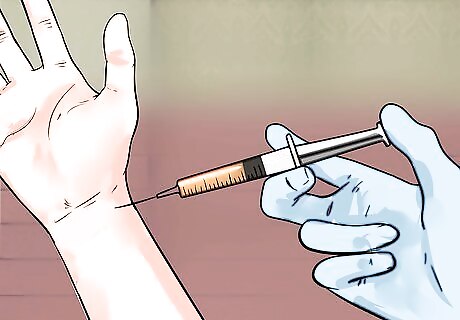
Consider cortisone injections. If the symptoms are persistent, severe, and do not improve with other treatment steps, steroid injections into the wrist area may be helpful. This is considered only in extreme cases. Cortisone injections use technology to guide the medication administration directly into the carpal tunnel area. The benefit of the injections often last for several months. In extreme cases, a small surgical procedure may be performed. Exhaust all other treatment options before considering any surgical procedure during your pregnancy.
Developing Healthy Sleep Habits
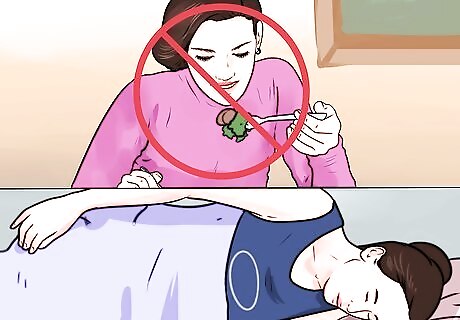
Improve your sleep habits. During your pregnancy, it may become difficult for you to get the rest you need for reasons beyond your control. Your typical sleep habits and routines may need some attention during this time to help you fall asleep and stay asleep longer. Avoid eating snacks or heavy meals close to bedtime and cut back on the fluids you drink in the late afternoon and evening. Stay away from caffeine in the afternoon and evening, and throughout the entire day unless your doctor has approved some caffeine. Limit your naps during the day. Keep nap times short and do not nap within four hours of bedtime. Keep to a regular schedule. Go to bed at the same time every night, and get up at the same time each morning.
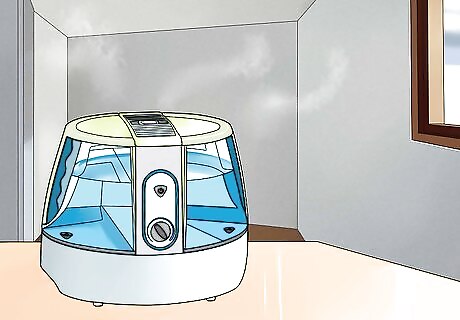
Control your environment. Do what you can to make your bedroom and bed as comfortable as possible. Take steps to add pillows, curtains, or adjust the temperature, so you can fall asleep easier and stay asleep as long as possible. Make your bedroom as dark as possible. The darkness tells your brain it is time to sleep. Turn down the temperature so the bedroom is cool. If you are having nasal congestion or problems with sinuses during the night, consider adding a small room humidifier to your bedroom. Don’t watch television, play video games, use your laptop, or any screened device, in your bedroom or just prior to bed. Keep your bedroom for sleep and sex only. Stop tossing and turning. If you cannot sleep, then get up, go into another room, and relax until you feel sleepy.

Consider herbal tea. Always check with your doctor before you start anything new, including herbal tea products. Many herbal products may be harmful during pregnancy. Oatstraw may be helpful include oatstraw. Drink your tea warmed and about an hour before bedtime. Add a small but healthy snack with your tea that is high in protein, such as a small serving of nuts or turkey. Avoid or limit your caffeine intake. The American College of Obstetricians and Gynecologists recommends 2 cups of coffee a day (about 200 mg per day).

Take supplements for sleep. Be sure to ask your doctor about taking anything new, including over-the-counter sleep aids or supplements, before you start taking them. Ask your doctor about taking a low dose of magnesium. Magnesium is recognized as helping with muscle pain that can sometimes make it hard to fall asleep. Melatonin is a supplement that works to promote sleep, but there is some controversy about using melatonin in pregnancy. Be sure you talk to your doctor before you add melatonin, or change anything about the medicines, herbal products, or supplements you take.



















Comments
0 comment